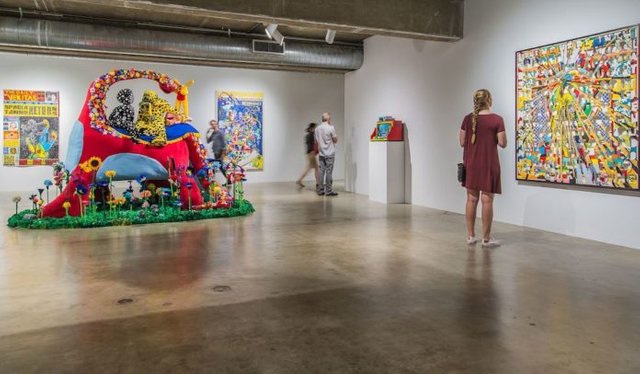What is contemporary art?
Contemporary art encompasses a range of styles that is impossible to categorize and moves at a speed that is impossible to predict. It is a broad word that encompasses contemporary and recent art rather than a specific style or genre. Contemporary art, to put it simply, is art made now and about today.
What is the definition of contemporary art?
An avant-garde approach is one quality that is synonymous with, or maybe indicative of, contemporary art. Contemporary art draws on postmodern concepts in order to question the discourse of conventional art, as a continuation of the major modern art movements that defined the twentieth century, from the notion of Cubism to the style of Surrealism.
Experimentation is a necessary part of the evolution of modern art!. Contemporary artists blend everything from the modern and the ancient, the two dimensional and the three dimensional, in challenging and intriguing ways. Contemporary artists make work that looks to the future by using the past to understand the present.
What Is the Distinction Between Modern and Contemporary Art?
The terms "modern" and "contemporary" are interchangeable in English. Unfortunately, in the art world, these two phrases refer to two distinct periods of invention and two distinct approaches to art production and utility, and they frequently cause the most misunderstanding. To comprehend the Contemporary Art category!, we must first comprehend the distinction between the two.
The phrase "modern art" typically refers to artwork created between the 1860s and the 1970s. The art created during this time period emphasized innovation and eschewed old norms. Experimenting with various materials and methods of perceiving art, the utility of art evolved as the traditional arts moved away from narrative and toward abstraction. The greatest effect of Modern Art is this unprecedented independence and innovative manner of depending on inner thoughts and expressing such views. This represented not just the shift away from figuration, but also affected how people viewed actual life, social concerns, and current imagery.
Exploring the history of contemporary art
The chronology of contemporary art is still a hotly disputed topic. While some claim that contemporary art began on the eve of the 1950s, others argue that it actually began in the late 1970s. Movements like Pop Art, Post-Modernism, and Abstract Expressionism can theoretically be classified as both, spanning the gap between the two, depending on when modern art finished, and contemporary art began.
Exploring the cut off era
For many, the cut-off era, or end of Modern Art, coincides with the emergence of the term Postmodern in the 1970s. With the advancement of technology, we see the birth of Video Art and Performance Art, as well as experimentation and appropriation from a variety of fields and sources, towards the end of the twentieth century. Simultaneously, we observe a surge in theory and philosophy study into the term Postmodern and the dominance of the present, where the focus is on what we have in front of us, which necessitates knowledge of current trends. Now is the period when everything begins to come together to produce this varied and diversified body of contemporary art.
The guiding spirit underlying the Contemporary Art category is influenced by postmodern beliefs that everything is fractured and at the same time an entity of its own, questioning every classification. Contemporary art delivers work with a dynamic blend of materials, processes, concepts, and topics that question the traditional and resist easy classification due to its diversity and demanding character. Contemporary artists investigate historical ideas, concepts, questions, and practices in order to comprehend the present and imagine the future.
Because of the variety of these approaches, contemporary art is frequently perceived as lacking a uniform organized principle, ideology, or label, and at times as being so straightforward that the public is left wondering if they are missing something, and frequently questions the meaning of contemporary art.
Contemporary art as a subject
The notion that the Artist! is the only author of the work has long since vanished. The audience became an essential part of the production of the meaning and reflections of the creative works as Contemporary Art evolved. The process becomes crucial, and the diversity of techniques aids in the creation of distinct categories within a category. The postmodern attitude is only strengthened by this departure from the prevailing concept of current art.
In compared to Abstract Expressionism, one of the most important and dominating trends in Modern Art, Contemporary Art appears to lack that unified concept and expression, since the period when Contemporary art is made is a time of continual inquiries, re-evaluations, and experimentation. Nothing is sacrosanct in this experimentation.
Everything is up for grabs for modern artists, and everything may be Art. As a result of all of this, modern artwork's subjects, following the current trend, produce the current trend itself, always attempting to extend the concepts of what is regarded to be Art in the first place. The subjects of such works frequently reflect contentious topics in modern culture, with the goal of redefining the world and accepted norms.
Final words
What appears to be one of the most significant contrasts between the two groups is that Modern Art made references to the past and sought to comprehend the present via these references and appropriations. Contemporary art attempts to comprehend the present as well, yet the present is becoming increasingly fractured and shape-shifting. In this context, the works created can only allude to the immensity of the diversity on offer, and because the category requires that one be conscious of their surroundings, the concerns raised are as fleeting as the wind.
They're there, and they have an impact on how we view and interact with the world, but then something else comes along, and the attention switches. As a result, some new and redefined modern art emerges. While keeping these facts in mind, you can continue to explore contemporary art and everything offered out of it.
